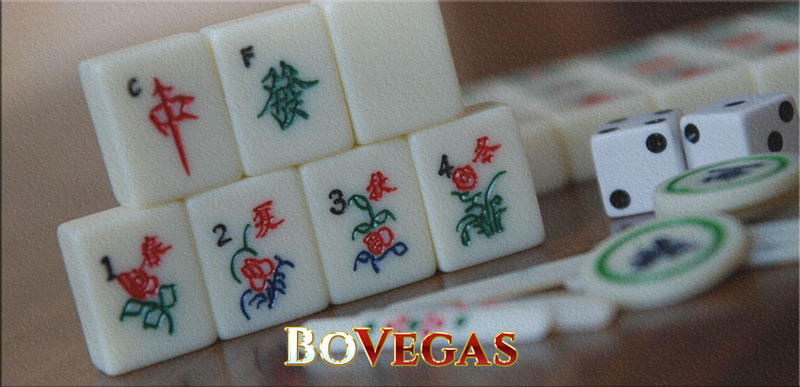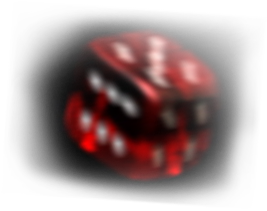



Gambling activities have been firmly established in many Asian countries since ancient times: in India, they were even considered as a way of conflict resolution, while the early production of paper in China pushed the invention of cards. Today, Asia is the world’s biggest gambling region. This does not only provide great entertainment for local communities; it also influences Western casinos to a great extent. We can hardly imagine a large gambling platform without our beloved Keno or Pai Gow Poker. Lots of games that are in high demand in European and American markets have Asian roots or are inspired by Oriental culture. Let’s explore some traditional games that came to us from Eastern countries.
Western customers are acquainted with a version of poker influenced by this game, while Pai Gow per se can really be considered a kind of Chinese dominoes. The main purpose of the game is to collect the maximum score of nine points: the dominoes are placed into eight stacks, and every player has to make two hands out of a stack containing four piles which would be higher than the dealer’s hands. It is a complex game, with some rather complicated scoring rules, including many exceptions; and because of this, Pai Gow remains a rather exotic form of entertainment, which is not attractive to the general public.
Pai Go Poker, by contrast, is extremely popular in both Eastern and Western casinos. Each player attempts to create a five-card and a two-card hand, in order to beat the banker’s ones. The game was invented in 1985 by a Los Angeles casino owner who was inspired by a Chinese poker called Pusoy.
This is a globally successful game that wins over gamblers by being easy and captivating. It seems a combination of lottery and bingo: players pick 5-10 numbers from a set, hoping they would match 20 numbers that will be randomly generated. Keno requires neither skills nor experience: users can even run an automatic mode which allows to play up to 10 times with previously selected numbers.

This type of entertainment represents a significant item of Japanese revenue. In 2017, the number reached ¥25 trillion, which is more than Las Vegas and Macau bring together. Still, the majority of Western casino visitors don’t know what pachinko is.
This one is a popular dice game, also of Chinese origin. It’s a fast-paced entertainment which uses three dice, unlike a relatively similar game of craps which features two dice. It was introduced to the United States and Europe in the 1980s by Asian immigrants. The house edge for Sic Bo ranges between 2.78% for the most profitable bet and a horrible 33% for the sucker bet. There are lots of people who love this game, especially when it comes to the live dealer section.
This resembles a Western game of rummy, which is considered more as entertainment for home parties than for casinos. Usually, there are four participants in mahjong: everyone gets 13 tiles, and then they draw and discard the tiles in order to collect a hand of four melds (sets) and one eye (a pair).
Baccarat is one of the most popular games among Easter players. Some believe it suits the cultural preferences of Asian gamblers the most. Dragon Tiger is a two-card version of baccarat; it is usually set in a themed environment with oriental ornaments on the background. Two mythological creatures, the Dragon and the Tiger, serve as competing cards in this game.
There’s a huge variety of casino games that have originated from Asia. Apart from the ones we’ve mentioned, which are even well established on Western gambling platforms as well, there are some lesser known ones:
Also, a lot of slots produced by big European brands have Oriental themes, which draw upon both mythology and pop culture. With the Asian market growing, and some countries changing their laws in favor of casinos, we can expect some new waves of influence from this continent!

There always will be discussions on the positive and negative impact of gambling, and both sides are hardly likely to find a consensus. The media tend to exaggerate both sides of the issue. Mind-boggling stories of big slot wins at casinos encourage people to try their hand at playing, while headlines about great losses make […]
When we’re thinking about modern land-based casinos, we mostly tend to imagine large casino-resorts featuring a multi-story hotel, conference room, spa, concert hall and, of course, a luxurious casino that probably occupies more than one floor. Actually, it’s a fair stereotype: big casinos that can offer lots of other services attract lots of clients with […]
If you want to learn how to become a better player in blackjack and you’ve just started searching the web, you may be surprised to see that there are tons of learning materials and resources out there – perhaps many more than you first expected. But the sheer multitude of sources of all kinds out […]
Who is Isildur1? Why is Fedor Holz that much successful? Why is Dan Bilzerian famous? Why is Phil Ivey so popular? Successful gamblers come from all walks of life. They need not resemble each other in their perception of the world or in their characteristics. In fact, they could be complete opposites of each other. […]
If you love gambling and have been to a land-based casino at least once, you may have thought about becoming a dealer. Playing the same game but from the opposite side, while communicating with other players, sounds like a dream job, right? A dealer is a straightforward job, and you will be the heart and […]
On Monday September 14, MGM announced that it plans to open its first smoke-free casino at the end of September, when Park MGM will finally reopen its venues to players and tourists. The resort comprises around 2,990 rooms and various restaurants, and it’s set to be reopened on September 30. The venue has been closed […]
Online gambling has undoubtedly taken a place of true supremacy over the casino industry during the pandemic. And the reason for that is quite clear: online casinos are more accessible, and you can always count on some encouragement from the casino administration to help you boost your game. However, this digital revolution has only been […]
The large selection of online gambling sites out there can make players somewhat puzzled, and give them a feeling of uncertainty about making the right choice of casino. Each online gambling venue offers its own conditions, games, and various bonuses, of course; but the most important thing is the reliability of the casino and the […]